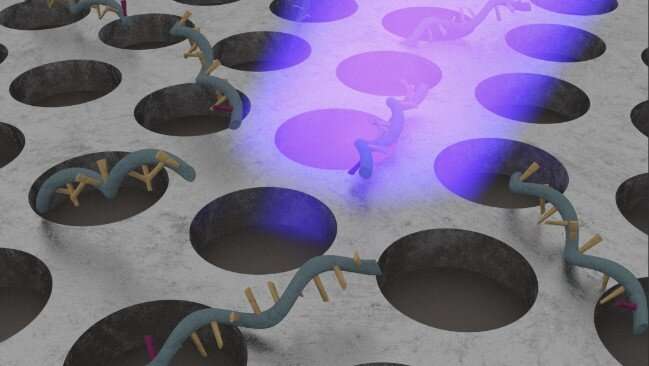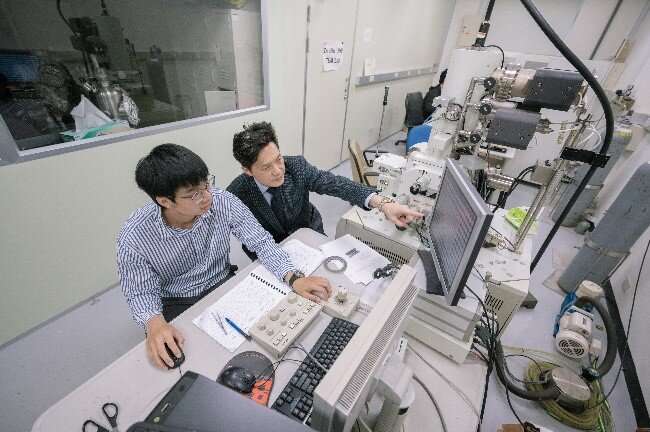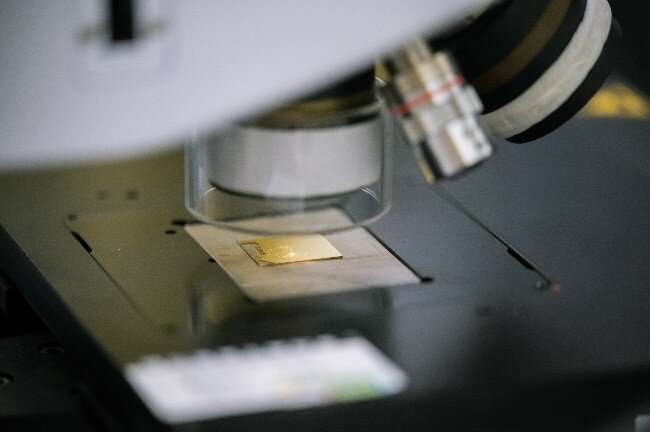New substrate for deep UV surface-enhanced resonance Raman scattering

The extreme accuracy and speed of NBA three-pointer Stephen Curry's long-range shots are well known to basketball fans around the world, but accuracy and speed are also a focus of research in biochemical testing. Dr. Yen Ta-Jen, professor in the Department of Materials Science and Engineering, National Tsing Hua University, Taiwan, has published a paper about deep UV surface-enhanced resonance Raman scattering (DUV-SERRS) in the Journal of the American Chemical Society, in which he revises conceptions about light diffraction also creating a fast, accurate spectral application. It is currently undergoing clinical trials for use in rapid screening for cancer and other diseases, and also has potential applications in such areas as genome screening, biomedical engineering, polymer synthesis, forensics, environmental and food safety, pharmaceuticals, and materials analysis.
Dr. Yen explains the key technology for changing normal light diffraction by referring to the opening and closing of a window blind. When the blind is closed, it prevents light from entering the room, causing it to darken. However, with the substrate Dr. Yen has developed, light is not impeded by such obstacles, instead becoming brighter. Dr. Yen said that his breakthrough is the result of 18 years of systematic and continuous research. Nanoscale geometric cavities made on a single crystal aluminum plate substrate cause the light to behave in a way it normally doesn't—this is resonant diffraction, which makes it possible to develop detection applications that are simple, fast, repeatable, label-free and ultra-sensitive. What's more, whereas the other substrates reported in SERRS papers have only one to four Raman peaks, the substrate designed by Dr. Yen has seven to nine, which greatly improves the results.

Amongst the many applications of detectors are pollution monitoring, food safety, biomedicine, and crime scene investigations; amongst the many detection methods is infrared. Raman spectroscopy is non-invasive and less susceptible than infrared to external interference from such substances as water and carbon dioxide, but is not as sensitive. In addition, the cross-section of Raman scattering is small, so its spectroscopy analysis requires a large number of samples, which hinders practical application.
In recent years, researchers have developed a technique called surface enhanced Raman scattering (SERS), which uses localized surface plasmon resonance to improve detection sensitivity by orders of magnitude through the interaction of light and matter. But for the detection of single molecules, SERS technology is still far from sufficient, which is what prompted Dr. Yen to come up with an innovative solution, consisting of increasing the excitation frequency of surface plasmon resonance to induce the Raman resonance scattering effect. In this way, he succeeded in developing a surface-enhanced resonant Raman scattering (SERRS) technique that can reach the deep ultraviolet band (DUV, wavelength of 266 nm).

This unique and ultra-sensitive detection technology is label-free, and has a strong local electromagnetic field and charge transfer effect, such that it can detect an extremely wide range of substances, including nucleic acid, proteins, chemical substances, ultraviolet rays in outer space, and even the gunpowder being used in the Ukrainian-Russian War. Even with the monomer adenine (base A), with a thickness of only 1 nm, its Raman enhancement factor can be as high as 106 times in the deep ultraviolet band, setting a new world record. The much enhanced SERRS signal of the 12-mer ss-DNA first proposed by Dr. Yen is suitable for use with all types of nucleic acid bases, as well as their sequential mutations; this mutation measured demonstrates a linear relationship to the quantity of its base A, which can be used as a quantitative detection application.
This groundbreaking technology is now being rigorously tested in clinical trials. At the same time, Dr. Yen is developing a low-cost version that can be used by consumers to test produce for excessive levels of residual agricultural chemicals.
More information: Abhishek Dubey et al, Demonstration of a Superior Deep-UV Surface-Enhanced Resonance Raman Scattering (SERRS) Substrate and Single-Base Mutation Detection in Oligonucleotides, Journal of the American Chemical Society (2021). DOI: 10.1021/jacs.1c09762
Journal information: Journal of the American Chemical Society
Provided by National Tsing Hua University



















